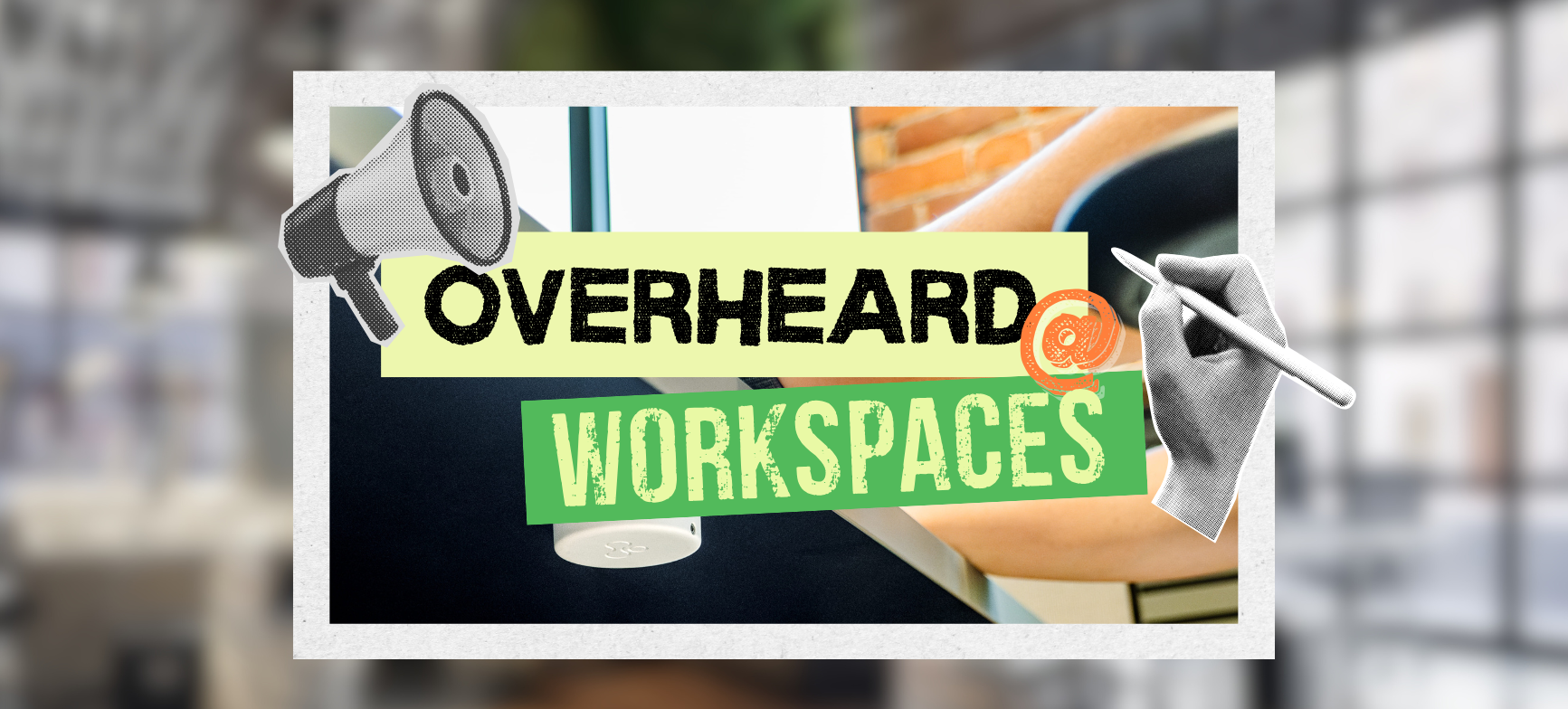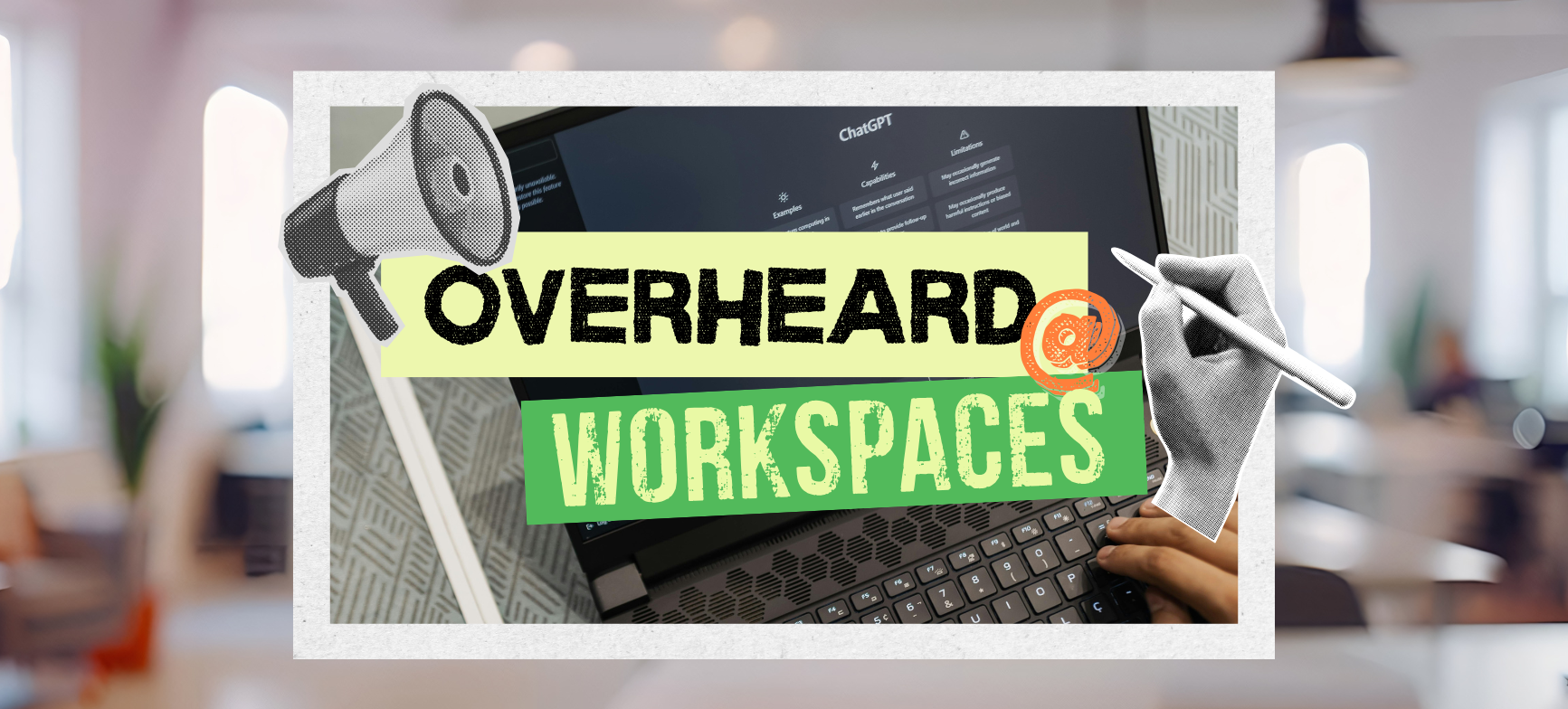Phil Kirschner doesn’t just think differently about the office—he thinks differently about work itself.
Ahead of his talk at WorkSpaces this fall, Phil sat down with us to unpack why vibe matters more than mandates, how companies can design offices people actually want to visit, and why we need a new role entirely: the Chief of Work.
From debunking outdated return-to-office logic to rethinking how workplace leaders show up, Phil’s insights challenge the status quo and offer a smarter path forward.
1. You recently wrote that “vibe officing” could be the antidote to office mandates. For folks who haven’t read your piece, what does that mean?
Vibe officing is what happens when you fully embrace mobility and mood-based decisions about where you work. Think of it like this: instead of "I have to go to the office on Tuesday," it becomes "What's the vibe I need today to do my best work?"
It matters now because we're stuck in this false binary of office mandates versus remote work. But employees aren't just reacting to spaces anymore—they're curating their experience. They want coffee shop vibes for writing, war room energy for sprint planning, or that buzzy coworking atmosphere for creative thinking.
The companies that get this aren't asking "How do we force people back?" They're asking, "How do we create environments so magnetic that people actively choose to visit?" When you shift from control to invitation, from presence policies to vibe creation, you stop playing defense and start building the future.
2. You’ll be speaking at WorkSpaces this fall about the concept of the “Chief of Work.” Can you give us a sneak peek at what that role is and why you believe it’s the future of workplace leadership?
The Chief of Work represents the evolution we desperately need—someone with end-to-end accountability for how people, technology, and spaces work together. Right now, HR owns culture, IT owns tools, and real estate owns buildings, but nobody owns the holistic experience of work itself.
I've seen this gap everywhere. HR leaders are frustrated that their engagement surveys don't account for terrible office WiFi. IT teams are rolling out collaboration tools while employees sit in assigned cubicles that kill creativity. Real estate professionals design beautiful spaces that feel empty because there's no community activation.
The Chief of Work would be like a product owner for the entire work experience—not just managing functions, but orchestrating how they create value together. Because the future of work isn't about having better individual pieces; it's about making them work as one coherent system.
3. We’ve seen companies swing between remote-first and return-to-office mandates. What do you think most organizations are still getting wrong about the purpose of the office?
Most organizations are stuck in what I call "purpose drift"—they know the old reasons for having an office don't work anymore, but they haven't articulated new ones. They're trying to solve a 2025 problem with 2019 thinking.
In my McKinsey research, we found that the highest-performing offices have crystal-clear purposes that go beyond "where work happens." They're designed for specific, measurable outcomes. And getting people in the door isn’t one of them.
The companies still struggling are asking the wrong question entirely. Instead of "How do we get people back?" they should be asking, "What unique value can this physical space create that nowhere else can?" Because your office is now competing with every coffee shop, coworking space, and home setup your employees have access to.
Without that clear purpose, you're not running a workplace—you're running an expensive coworking space that your employees didn't choose. And when presence is optional, that's a losing game.
4. What are one or two things you think every workplace leader should be focused on if they want to make the office worth the commute?
First: Be the amenity. The best workplaces aren't about fancy coffee bars or ping-pong tables—they're about leaders who show up authentically and make themselves accessible. If you want people to commute, commute alongside them. Be visible (i.e., not in meetings all day), be vulnerable, be the reason they want to hang for happy hour.
Second: Design for collision, not just collaboration. Most offices are built for scheduled work, meetings, calls, and heads-down time. But the magic happens in those unplanned moments between the planned ones, or between groups or companies. Create spaces where ideas naturally bump, where conversations happen spontaneously. Don’t be afraid of desk sharing or permitting employees to use “third places.”
Stop thinking about your office as real estate and start thinking about it as a product with users who have alternatives. Every day, people choose between commuting to your space or staying home. Make sure you're giving them a compelling reason to choose you.
5. Your work sits at the intersection of people, place, and performance. What’s something you’ve changed your mind about in the past year when it comes to the future of work?
I used to think that great workplace strategy was about predicting the future and building for it. But I've since realized it's actually about building the capacity to adapt continuously.
The companies that are thriving aren't the ones who guessed right about hybrid work or AI adoption. They're the ones who created systems flexible enough to evolve with whatever comes next. They treat their workplace as a living product that gets better through iteration, not a fixed asset that's either right or wrong.
This shift from "build the perfect solution" to "build for continuous adaptation" has changed how I advise clients. We focus less on getting the future exactly right and more on creating organizations that can sense, respond, and improve, no matter what. AI is reshaping industries in months; we can’t be signing 10 years leases and hoping for the best.
To delve deeper into these transformative ideas and connect with other forward-thinking leaders, click here to request your invitation to join us at WorkSpaces Oct 5-7, in Napa, CA.
👉 Check out Phil’s talk from last year at WorkSpaces.
Posted by
Join us at WorkSpaces!
The retreat for corporate real estate and workplace innovators.
Oct 4-6, 2026 | Santa Barbara, CA




-3.png)
-3.png)


-2.png)

Comments